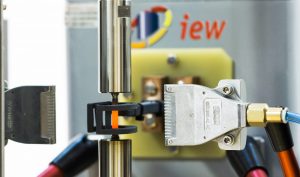Applications
Applications
Principle of induction heating, working mechanism, benefits, and applications
Induction heating is a thermal process in which an electrically conductive workpiece is exposed to an alternating electromagnetic field. Eddy currents form inside the part, their current density converts electrical energy into heat. For ferromagnetic materials, hysteresis losses contribute to heating up to the Curie temperature, typical values are cobalt 1121 degrees Celsius, iron 768 degrees Celsius, nickel 360 degrees Celsius.

How heat is generated in the workpiece
The inductor and the workpiece act like a short circuited air core transformer. The magnetic field of the inductor induces eddy currents in the part. These currents flow mainly near the surface, power is deposited directly in the material, heat paths are short, heat up times are low. In ferromagnetic materials, hysteresis is relevant below the Curie point, above this temperature eddy current heating dominates.
Frequency ranges and penetration depth
In practice, engineers distinguish low frequency applications about 50 to 300 hertz, medium frequency up to about 50 kilohertz, and high frequency from about 50 kilohertz. The selected operating frequency controls the penetration depth. Lower frequency gives greater depth, higher frequency concentrates power near the surface. The distribution of current density follows the skin effect. The exact depth depends on electrical conductivity, magnetic permeability, and the temperature of the material.
- Low frequency, larger penetration depth, suitable for massive cross sections and volumetric heating
- Medium frequency, balance between depth and surface power, common in production
- High frequency, shallow penetration depth, ideal for surface processes and thin walls
Material dependence and efficiency
Efficiency is determined by electrical conductivity and magnetic properties. Steels and stainless steels heat efficiently. Copper and aluminum have high conductivity, which requires careful selection of power, frequency, and coupling to reach the target temperature. With rising temperature the permeability of ferromagnetic materials drops toward the Curie point, the heating behavior changes and the control loop must account for it.
Inductor, coupling, and process control
Results depend strongly on the inductor. Key variables are geometry, number of turns, shielding, coupling distance, and current distribution. Tight and uniform coupling reduces heat up time and improves temperature uniformity. During operation, power, frequency, on time, possible part motion, and cooling are coordinated. Temperature is measured with pyrometers or thermocouples, or inferred from validated parameter windows. Closed loop control ensures repeatable results.
Applications in manufacturing
- Brazing, high strength joints, short cycle times, low oxidation
- Hardening, defined case depth, targeted zone hardening, in cycle quenching
- Annealing, stress relieving, normalizing, soft annealing with repeatable temperature curves
- Shrink fitting, precise joining and releasing of press fits with tight dimensional control
- Tempering, controlled temperature windows to set part properties
- Welding and melting, clean and robust, with shielding gas or vacuum if required
- Science and test labs, reproducible heating for institutes, laboratories, and validation work
Shielding gas and vacuum
The induction field passes through non conductive media such as glass or ceramics. Since there is no open flame and heating is contactless, induction works very well in shielding gas or vacuum. Part surfaces remain clean, discoloration is minimized, and rework is reduced.
Benefits at a glance
- Contactless heating, low tool wear, clean surfaces
- Accurate temperature control, reproducible results with closed loop processes
- High efficiency, energy is converted directly inside the part
- Fast heat up, short cycle times for series production
- Compact footprint, easy integration into cells and lines
- Good working conditions, no open flame, no process smoke
Practical examples
- Brazing of a brass to steel assembly, target temperature 650 to 700 degrees Celsius, typical hold time 15 to 30 seconds depending on mass and coupling
- Surface hardening of a shaft seat, required case depth a few millimeters, seconds of heating, followed by in cycle quenching
- Shrink fitting of a gear seat, heat to about 180 to 220 degrees Celsius, short assembly window, high repeatability
FAQ on induction heating
How do I select the right frequency
Geometry and required penetration depth dominate the choice. Thin walls and surface work benefit from high frequency. Massive sections require lower frequency. In most projects the final combination of power, frequency, and coupling is tuned during sampling.
How do I measure temperature reliably
Use pyrometers or thermography for free surfaces, thermocouples for shielded zones or for initial setup. In series production, release is often based on a validated parameter window that correlates with measured part quality.
Which materials can be heated inductively
All electrically conductive materials, for example steel, stainless steel, copper, brass, and aluminum. For very high conductivity materials, coupling and power are adjusted to reach the target temperature safely.
Is induction suitable for shielding gas and vacuum
Yes. The field penetrates non conductive media, which makes shielding gas and vacuum processing straightforward. Surfaces stay clean and discoloration is reduced.
How do I recognize a stable process
Consistent heat up times, documented temperature control, tight part tolerances, and low rework. A sensible data capture strategy supports audits and series approval.
Planning to implement induction heating, we support inductor design, frequency selection, and control strategy until the process window runs reliably on your line.
